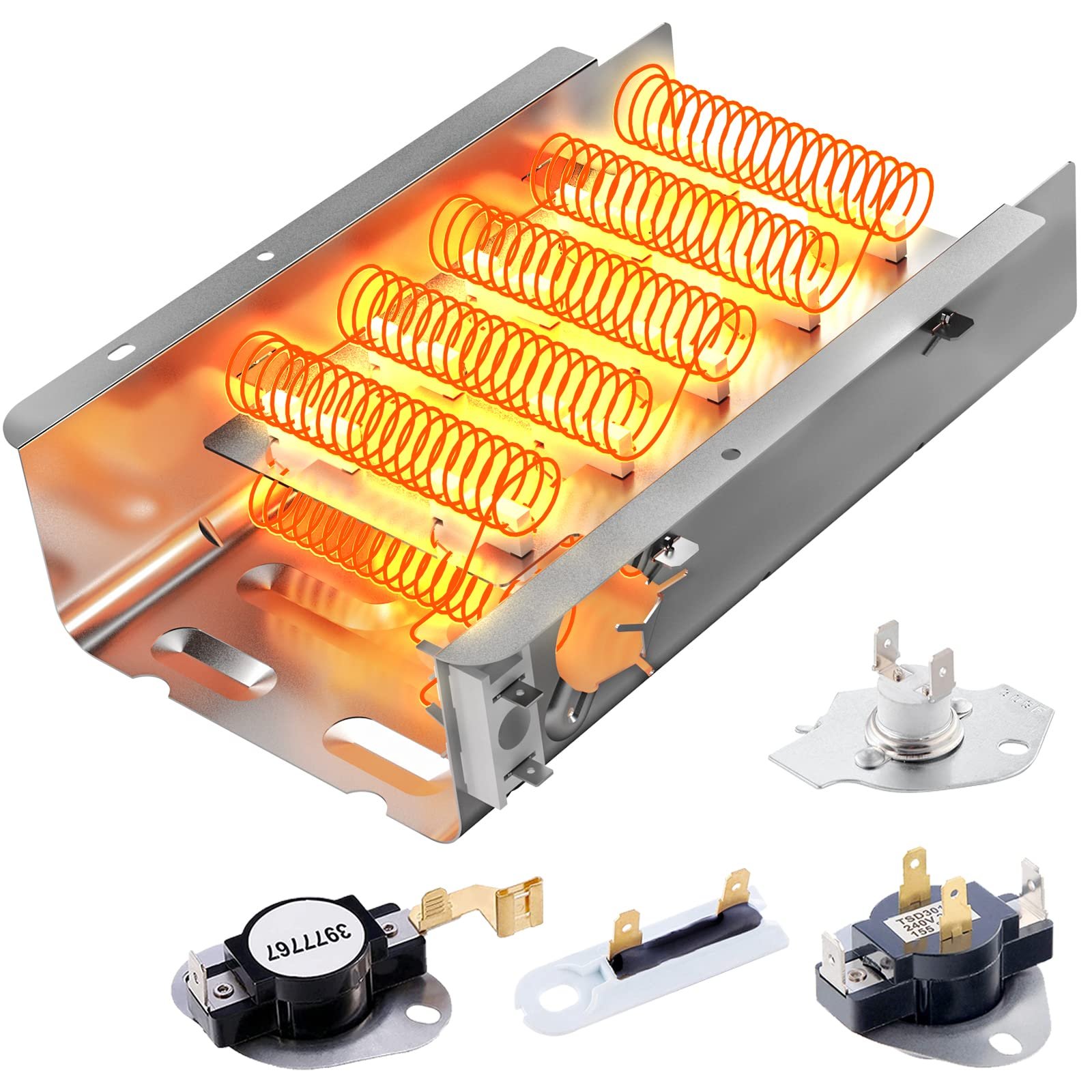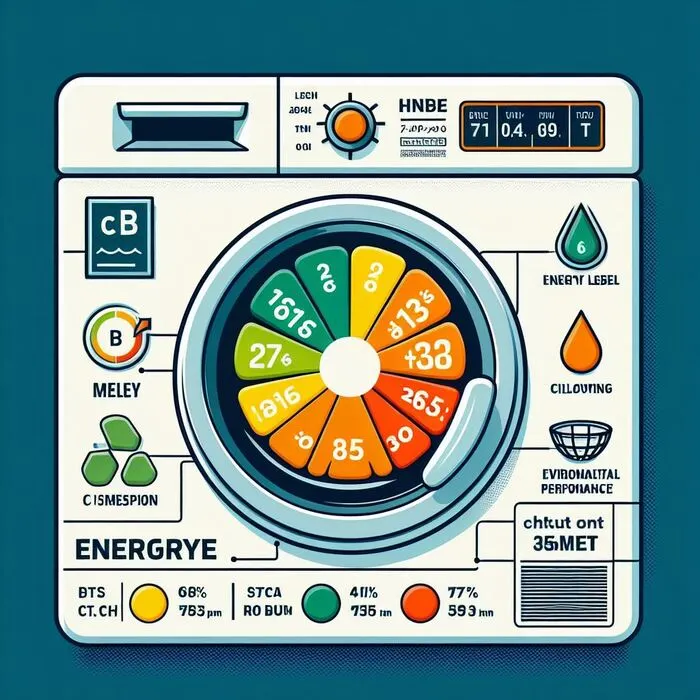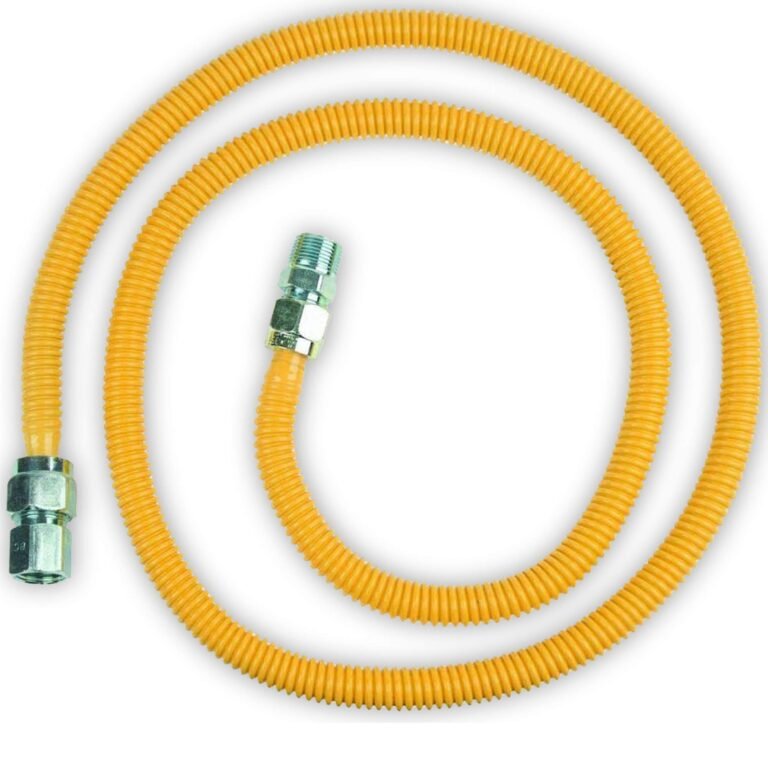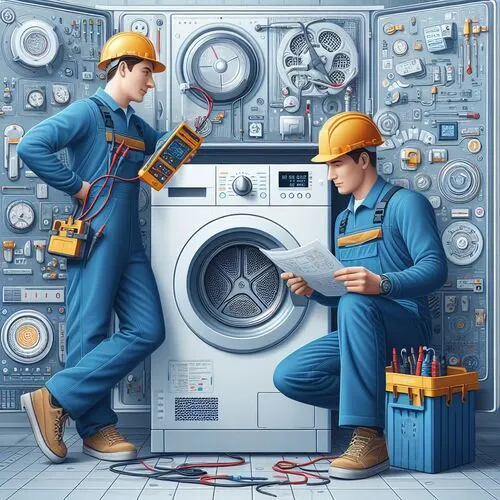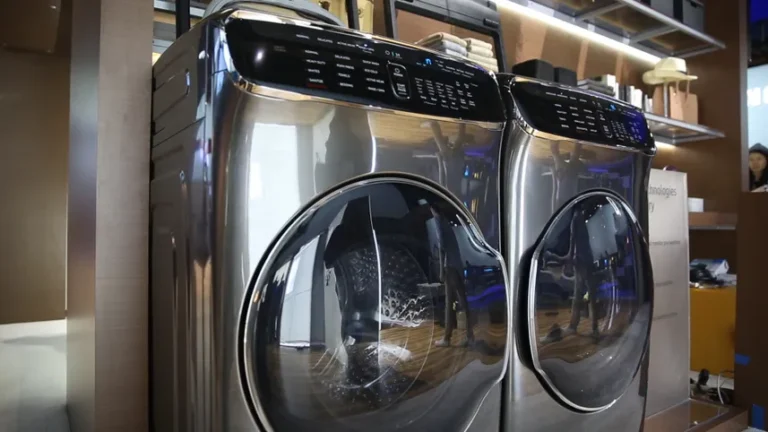does a gas dryer have a heating element?
Considering whether a gas dryer has a heating element is a common question for homeowners looking to upgrade their laundry appliances. In this article, we will dive into the inner workings of gas dryers to determine the presence and function of a heating element.
Gas vs Electric Dryer, which Gas dryers operate differently than their electric counterparts, utilizing natural gas or propane as a heat source. Unlike electric dryers, which rely on heating elements to generate warmth, gas dryers employ a gas burner assembly to produce the necessary heat. This assembly ignites the gas and creates a flame, which in turn heats the air used to dry your clothes.
Understanding the mechanics of a gas dryer’s heating process is essential for both troubleshooting and maintenance purposes. By having a clear grasp on whether a heating element exists and how it operates, you can ensure efficient and effective drying cycles.
Join us as we explore the world of gas dryers and shed light on whether or not a heating element is present. Are Gas Dryers Dangerous? Get ready to improve your laundry experience by gaining a deeper understanding of the technology behind these appliances.
does a gas dryer have a heating element?
Yes, a gas dryer typically has a heating element and the heating element in a gas dryer is typically referred to as the “gas burner assembly.”
how a gas dryer works?
Gas dryers operate differently than their electric counterparts, utilizing natural gas or propane as a heat source. Unlike electric dryers, which rely on heating elements to generate warmth, gas dryers employ a gas burner assembly to produce the necessary heat. This assembly ignites the gas and creates a flame, which in turn heats the air used to dry your clothes. We recommend to read about how does a gas dryer work for further notice.
Gas dryers consist of several key components that work together to dry your clothes efficiently. These parts of a dryer include the gas burner assembly, a thermostat, a gas valve, a Dryer Motor, and a blower as some do have inverter motor. The gas burner assembly is responsible for igniting the gas and creating a flame, while the thermostat regulates the temperature to prevent overheating. The gas valve controls the flow of gas to the burner assembly, and the motor powers the blower that circulates the hot air within the dryer drum. Read about dryer thermal fuse keeps blowing problem.
what are the Components of a gas dryer?
While gas dryers do not have a traditional heating element like electric dryers, they do have a component that serves a similar purpose. This component is called the igniter. The igniter is responsible for igniting the gas in the burner assembly, creating the flame that heats the air. Although it is not technically a heating element, the igniter plays a crucial role in the heating process of a gas dryer.
When you start a drying cycle on a gas dryer, the igniter begins to glow, signaling the gas valve to open and release gas into the burner assembly. Once the gas is ignited by the glowing igniter, the flame is sustained throughout the drying cycle, providing the necessary heat to dry your clothes.
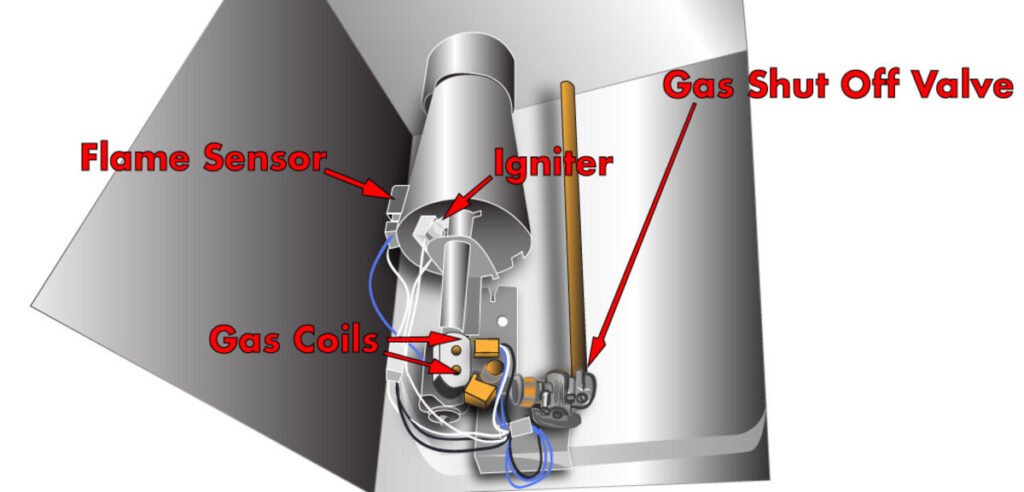
what is The role of the heating element in a gas dryer?
One of the main differences between gas and electric dryers lies in the way they generate heat. Electric dryers rely on heating elements, which are electrical coils that produce heat when an electric current passes through them. These heating elements are located inside the dryer drum and radiate heat to dry the clothes.
Gas dryers, on the other hand, do not have heating elements in the traditional sense. Instead, they use a gas burner assembly and an igniter to create a flame that heats the air. This flame is more efficient and powerful than electric heating elements, resulting in faster drying times for gas dryers.
Another difference between gas and electric dryers is the cost of operation. Gas dryers tend to be more energy-efficient and cost-effective in the long run, as natural gas or propane is generally cheaper than electricity. However, it is important to note that the initial cost of purchasing a gas dryer is typically higher than that of an electric dryer.
what are the Differences between gas and electric dryers in terms of heating element?
Although gas dryers do not have traditional heating elements, they can still experience issues related to the heating process. One common problem is a faulty igniter. If the igniter fails to glow or does not reach the proper temperature, the gas valve will not open, and the dryer will not heat up. In such cases, the igniter may need to be replaced.
Another issue that can occur is a malfunctioning thermostat. If the thermostat is not calibrated correctly or is defective, it may not accurately regulate the temperature, leading to overheating or underheating of the dryer. Regular maintenance and occasional recalibration of the thermostat can help prevent such issues.
Clogged or obstructed venting can also affect the heating performance of a gas dryer. When the venting system is blocked, the hot air cannot escape properly, resulting in longer drying times and inefficient drying cycles. It is essential to clean the venting system regularly to maintain optimal airflow and prevent potential fire hazards.
what are the Common issues with gas dryer heating elements?
If you suspect that your gas dryer’s heating element is not functioning properly, there are several troubleshooting steps you can take before calling a professional. Start by checking the igniter for any signs of damage or wear. If gas dryer not igniting and the igniter is not glowing or is cracked, it may need to be replaced.
Next, inspect the thermostat to ensure it is properly calibrated and functioning correctly. If the thermostat is faulty, it will need to be replaced to restore proper heating. Additionally, check the venting system for any obstructions or blockages. If the venting is clogged, clean it thoroughly to improve airflow and drying performance.
If the above steps do not resolve the issue, it is recommended to consult a professional technician who specializes in gas dryer repairs. They will have the expertise and tools necessary to diagnose and fix any complex problems with the heating element or other components of the dryer.
Troubleshooting and fixing a faulty gas dryer heating element
To ensure the longevity and optimal performance of your gas dryer’s heating element, regular maintenance is crucial. Here are some maintenance tips to keep in mind:
1. Clean the lint trap after every drying cycle to prevent lint buildup, which can obstruct airflow and affect the heating process.
2. Inspect and clean the venting system at least once a year to remove any lint or debris that may have accumulated.
3. Avoid overloading the dryer, as this can strain the heating element and result in less efficient drying.
4. Check the gas supply line regularly for any leaks or damage. If you suspect a gas leak, turn off the gas supply immediately and contact a professional technician.
5. Schedule annual maintenance checks with a qualified technician to ensure all components, including the heating element, are in proper working condition.
By following these maintenance tips, you can prolong the lifespan of your gas dryer’s heating element and enjoy reliable and efficient drying cycles for years to come.
what are the Maintenance tips for gas dryer heating elements?
If your gas dryer’s heating element is beyond repair or has reached the end of its lifespan, you may need to consider a replacement. When choosing a new heating element for your gas dryer, it is essential to select a compatible and high-quality option.
Original equipment manufacturer (OEM) heating elements are specifically designed for your dryer model and ensure optimal performance and compatibility. OEM parts may be slightly more expensive, but they offer peace of mind and often come with warranties.
Alternatively, there are aftermarket heating elements available that are compatible with various gas dryer models. These options can be more cost-effective, but it is important to research and choose a reputable brand to ensure quality and compatibility.
Before attempting to replace the heating element, it is recommended to consult the dryer’s manual or seek professional assistance. Gas dryers involve working with flammable gases, so it is crucial to follow safety guidelines and ensure proper installation to avoid any potential hazards.
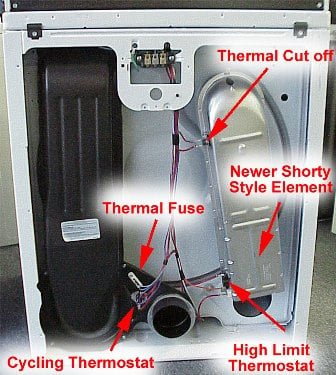
what are the Gas dryer heating element replacement options?
Understanding the presence and function of a heating element in a gas dryer is essential for homeowners who are considering upgrading their laundry appliances. Gas dryers rely on a gas burner assembly and an igniter to create a flame that heats the air, while electric dryers utilize heating elements.
Gas dryers offer several advantages, including faster drying times and lower long-term operating costs. However, they can experience issues related to the heating process, such as a faulty igniter or thermostat. Regular maintenance and troubleshooting can help address these problems and ensure optimal performance.
When it comes to replacing a gas dryer’s heating element, OEM options provide the best compatibility and performance. However, aftermarket alternatives can be a more budget-friendly choice with proper research and brand selection.
By gaining a deeper understanding of how gas dryers work and the role of the heating element, homeowners can make informed decisions when choosing the right dryer for their needs. With proper maintenance and care, a gas dryer can provide efficient and reliable drying cycles for years to come, enhancing the laundry experience for the entire household.
FAQ does a gas dryer have a heating element
What causes a gas dryer to not heat up?
Several factors can cause a gas dryer to not heat up. Common reasons include a faulty gas valve, a malfunctioning igniter, a clogged vent, a defective thermostat, or a broken heating element.
How do gas dryers heat up?
Gas dryers heat up by using a gas burner assembly, which includes components like a gas valve, igniter, gas burner, heat exchanger, and blower fan. Natural gas or propane is ignited by the igniter to create a flame in the gas burner, which heats the air passing through the heat exchanger. This hot air is then circulated through the dryer drum to dry the clothes.
Why is my gas dryer not drying my clothes?
A gas dryer not drying clothes properly due to various issues, including a clogged vent, a malfunctioning thermostat, a damaged heating element, or issues with the gas supply. Insufficient airflow or a faulty component can hinder the drying process.
How much does it cost to replace a heating element in a gas dryer?
The cost to replace a heating element in a gas dryer can vary depending on the brand and model of the dryer, as well as labor costs. On average, the cost can range from $100 to $300, including parts and labor.
What is the most common problem with gas dryers?
The most common problem with gas dryers is a clogged vent or exhaust system. When the vent is obstructed, it restricts the flow of hot air, leading to longer drying times or inadequate drying. Regular maintenance and cleaning of the vent can prevent this issue.check how to vent a dryer without a vent to outside
Why is my gas dryer only blowing cold air?
If your gas dryer is only blowing cold air, it may be due to a faulty igniter, gas valve, or thermostat. Additionally, issues with the gas supply, like low gas pressure, can also cause a gas dryer to produce cold air.
Do gas dryers have a thermal fuse?
Yes, gas dryers have a thermal fuse as a safety feature. The thermal fuse is designed to cut off power to the dryer if it overheats, preventing potential fire hazards. If the thermal fuse blows, it will need to be replaced.
What are the cons of gas dryers?
Gas dryers have some disadvantages, including higher upfront costs, the need for a gas hookup, and potential safety concerns related to gas use. Additionally, gas dryers can be less energy-efficient than electric dryers, depending on the energy source.
How long do gas dryers last?
The lifespan of a gas dryer can last 10 to 15 years, it can vary depending on factors like usage, maintenance, and the quality of the appliance. Regular maintenance and timely repairs can extend their lifespan.
How do you fix a dryer that is not heating?
To fix a gas dryer not heating, you can:
- Check for gas supply issues.
- Inspect the igniter, gas valve, and thermostat for faults.
- Clear any obstructions in the vent or exhaust system.
- Test and replace the heating element if necessary.
- Ensure that the dryer is properly connected and receiving power.
How do I know if my gas dryer ignitor is bad?
To determine if your gas dryer’s ignitor is faulty, observe the dryer during a drying cycle. If the ignitor does not glow or ignite the gas after the dryer is turned on or gas dryer igniter glows no flame, it may be a sign of a bad ignitor. Additionally, you can test the ignitor’s electrical continuity with a multimeter to confirm its condition.
How do I test my dryer heating element?
You can test the dryer heating element for continuity using a multimeter. Disconnect the dryer from the power source, remove the heating element, and check for electrical continuity. If the multimeter does not show continuity, it indicates a defective heating element that needs to be replaced.
How do you reset a thermal fuse on a dryer?
To reset a thermal fuse on a dryer, first identify the cause of the fuse blowing. Once you’ve addressed the underlying issue, you can reset the fuse by pressing the reset button if your dryer has one. If it doesn’t have a reset button, you’ll need to replace the thermal fuse with a new one. Resetting is not recommended if the thermal fuse blew due to a malfunction as it can pose a safety risk.
Conclusion: does a gas dryer have a heating element?
Does a gas dryer have a heating element ? Gas dryers work by harnessing the power of combustion to produce heat. When you start a drying cycle, the gas valve opens to allow natural gas or propane to flow into the burner assembly. This assembly consists of a burner tube, an igniter, and a flame sensor.
The igniter is responsible for creating a spark that ignites the gas. Once the gas is ignited, a flame is established within the burner tube. This flame produces intense heat, which is then used to warm the air that passes through the dryer drum.
As the drum rotates, the heated air circulates through the clothes, absorbing moisture and effectively drying them. The moisture-laden air is then expelled from the dryer through a vent, while fresh air is drawn in to continue the drying process.

